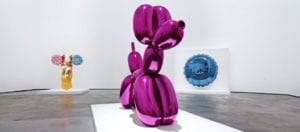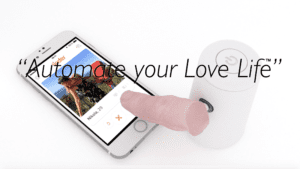Our group research project helps me understand interaction as a process in which one or more human actors engage in reciprocal exchange of information with other human beings, objects, systems, or the outer environment. Human actors and human experiences are at the essence of interaction, as I defined. After executing my midterm project, my definition adds in the emotional element as we discovered through presenting our midterm project, the button-triggered pipe. I came to redefine interaction as one that is more inviting, engaging, and amusing to the users. For instance, when users interacted with our Button, No? Project, many of them would “wow” when they observed the reciprocal responses from the LEDs, and the experience interacting with an art object was an engaging and amusing one. Executing our midterm project enabled me to rethink the relationship between human subjects and objects. The audience/user was no longer spectators passively receiving information from products/objects. Instead, users actively shape and reshape, alter, and reinterpret the messages they reciprocally exchange with the objects.

For our final project, I have been greatly inspired by the following three interactive projects: Disco Dog, Lonely Sculpture, and Speaking Through Emoji. Disco Dog is a smartphone controlled dog vest embedded with numerous LEDs. Dog owners can change the colors of LEDs and even create captions on the LED vest through a phone app. As shown in the project’s video, when someone walks the doggie with a LED vest at night, it was as if the dog is dancing disco with all the lights on. I immediately fell in love with this project and I think it aligns well with my definition of interaction, because users can alter the messages created by the vest, by changing the colors and captions shown on the disco vest. Besides, this project further facilitates connection between everyday pedestrians and make people feel something . If I ever see a dog wearing this disco vest, it would really light up my day and make me laugh. I feel strongly that this project should be included in the slides for Interaction Lab!
https://www.kickstarter.com/projects/prtyny/disco-dog-the-smartphone-controlled-led-dog-vest
Lonely sculpture project is basically an automated device that helps avid tinder users to swipe right on the profiles people like on the dating app. The project was initially created as an art piece. The artist, Tully Arnot’s design intention was to pinpoint and propel us to rethink the alienation of pointless interaction between the digitally fabricated finger and profiles on the tinder app. The device, although making it convenient to like as many people as possible, does not actually facilitate human connection. The project was later turned into a commoditized product with tag lines like “Automating your love life” and “More swipes means more connections”. The commoditized version of this project deviated from my definition of interaction. It simply became a functional tool to facilitate pointless swipes, instead of fostering meaningful conversations or matches among modern humans. The initial value that Arnot attached to his artistic creation was lost in the product.
Another project that I have researched is called Speaking through Emoji. Users can generate a series of instructions to the device by choosing preferences on the set up of switches, and the device will print out different kinds of emojis as response. This device enables users to express how they feel through the visual language of emojis. This project makes me think about finding a way for users to generate their own sets of instructions for my device, such as choosing preferences about their feelings, and my to-be-created device will give back a response based on the choices the users put.
Based on my research and my projects in Interaction Lab, I came to a new definition of interaction: Interaction is a reciprocal dialogue engaging human subjects, objects, and their embedded social contexts. The dialogue not only involves the exchanges of logical information, but it also generates meanings and values unique to human beings, as well as triggering emotional responses from humans.
My definition intends to refute the canon declaring that interaction is purely a logical process, focusing on how machines or computers follow logical steps and prescribed instructions. However, I feel more strongly that interaction, if with human presence, inherently involves feelings and emotions. When humans interact with each other, not only do we signal and decode linguistic and cultural meanings from each others, but we also sense feelings and emotions. Same should be applied to the narrative about interaction in a more general sense.
If humans are the essential participants in any given interaction, such a dialogue between human subjects and objects should not only arouse physical perceptions, but also trigger emotional response and feelings; whether connection, happiness, melancholy or wrath. If the human subjects are apathetic, and they are not interested, the interaction is poorly designed. My definition also emphasizes how interaction is contextualized in various settings. Interaction happens in specific time and space. Besides, the diversity of users also generate complexities to how we define interactions. Users see, interpret, and interact with objects in specific ways, based on their unique cultural and social imprinting.

Quoting from artist, Jeff Koons, “When I view the world, I don’t think of my own work. I think of my hope that, through art, people can get a sense of the type of invisible fabric that holds us all together, that holds the world together” (New York Times Interview with Jeff Koons) Same applies to the field of interaction design. My hope is that interaction is always designed for humans and their surrounding world, and interaction design can possibly connect those elements instead of alienating them apart.
